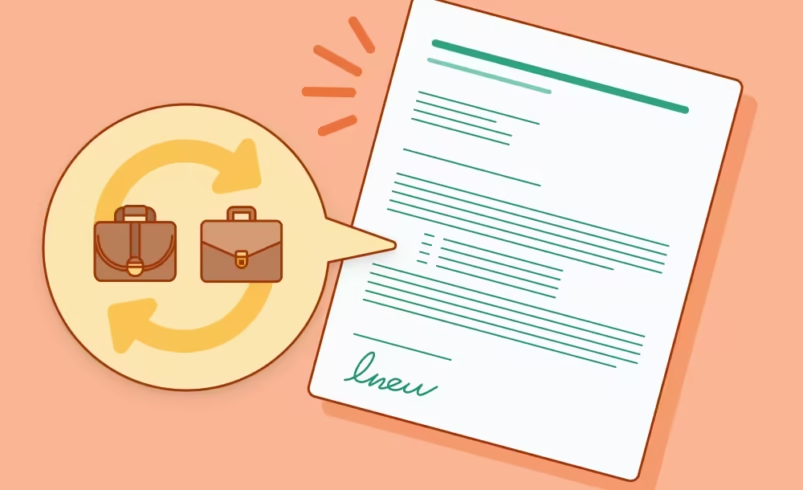How to Write a Career Change Cover Letter That Wows Employers

Making a career switch can be both exciting and nerve-wracking. Your resume can only tell part of the story. A well-crafted cover letter gives you the opportunity to explain your decision to transition, highlight transferable skills, and show employers how you’ll bring value in a new role. This article walks you through writing a compelling career change cover letter that bridges your past experience with the future position you’re targeting.
Why a Specialized Cover Letter Matters
Generic cover letters often fail to persuade hiring managers, especially when you’re shifting fields. Employers want to understand why you’re making the change and how your past work can benefit them—even if it’s from a different industry. Research found that applications tailored to explain career changes stand out more, making hiring managers feel confident considering you despite unconventional backgrounds.
1. Start With a Strong, Personalized Opener
Your opening paragraph must grab attention. Not with clichés—but with clarity and relevance. Address the hiring manager by name if possible (avoid impersonal greetings like “To Whom It May Concern”), and briefly state:
- Who you are professionally
- The position you’re applying for
- Why you’re excited about the opportunity
Avoid apologizing for lack of experience. Instead, hint at transferable strengths that make you a promising candidate.
Example opener:
Dear Ms. Rao,
I’m a customer success specialist with five years of experience in building client relationships and improving onboarding processes. I’m thrilled to apply for the Product Support Manager role at TechNova, where I believe my communication skills and empathy-driven approach can enhance your user experience and drive product adoption.
2. Explain Your Career Shift Confidently
Don’t dodge the transition—you should address it head-on. Frame your shift as a deliberate decision based on passion, research, or a desire to grow. Be honest, but keep the tone positive.
- Share what triggered the shift—passion, side projects, or skills developed.
- Connect this change to your long-term goals and how the new role aligns with them.
- Employers appreciate authenticity and dedication.
3. Highlight Transferable Skills & Achievements
This is the meat of your letter. Focus on skills and accomplishments that are relevant to the new role—even if gained in another field. Use bullet points or short paragraphs to make this easy to scan.
Key transferable skills often include:
- Communication, leadership, problem-solving
- Customer focus, adaptability, analytical thinking
- Technical tools or software knowledge (if relevant)
Quantify achievements where possible to show real impact:
• Led training sessions for a team of 15, boosting satisfaction scores by 20%
• Managed vendor relationships to streamline turnaround time by 30%
4. Showcase Learning & Preparation
Show hiring managers that you’re not just moving jobs—you’re investing in your future. If you’ve taken courses, earned certifications, attended workshops, or completed relevant projects, highlight them.
This demonstrates:
- Proactive learning and commitment
- Industry awareness
- Readiness to perform from day one
For instance:
I recently completed the Google Data Analytics Certificate, gaining hands-on experience with SQL, Tableau, and data visualization—skills I look forward to applying at InsightOne.
5. Tailor Your Letter to the Company
Generic letters fail, especially when changing industries. Show that you’ve done your homework:
- Mention the company’s mission, values, or latest projects.
- Explain how your background aligns with what they do or value.
Recruiters want to hire candidates who are not only qualified—but genuinely interested in working with them.
Example:
I admire FinWell’s mission to make financial literacy accessible to all. I align strongly with your vision of empowering users, and I’m eager to help shape product experiences that bring clarity and confidence to your community.
6. Close With a Confident, Enthusiastic Call to Action
End on a high note. Briefly recap your readiness and express enthusiasm to discuss your fit in the role. Be courteous but confident:
Thank you for considering my application. I’d welcome the opportunity to discuss how my problem-solving mindset and passion for user-focused solutions can contribute to FinWell’s team.
Sincerely,
[Your Name]
Keep the tone forward-looking and positive.
7. Proofread and Polish
Never underestimate the power of a perfectly edited letter. Simple mistakes can undermine even the strongest story.
- Check grammar, spelling, and punctuation.
- Read aloud to catch awkward phrasing.
- Ask a friend, mentor, or coach to review it for clarity and impact.
Full Structure of an Ideal Career Change Cover Letter
- Opening: Personal address + clear reason for writing
- Introduction: Quick professional background + intention to switch fields
- Why the change: Motivation and alignment with goals
- Transferable skills: Achievements that map to the new role
- Preparation evidence: Courses, certifications, projects
- Company connection: Why this company, why this role
- Closing: Enthusiasm + invitation to discuss further
- Signoff: Polite and professional tone
Final Thoughts
Writing a compelling career change cover letter is your chance to bridge the gap between your past and the future you’re aiming for. By explaining your motivations, emphasizing transferable skills, and demonstrating preparation and enthusiasm, you position yourself as a thoughtful, capable candidate. This letter can be the key that turns your transition from “unconventional” to “inspired”—unlocking new opportunities in your career journey.





